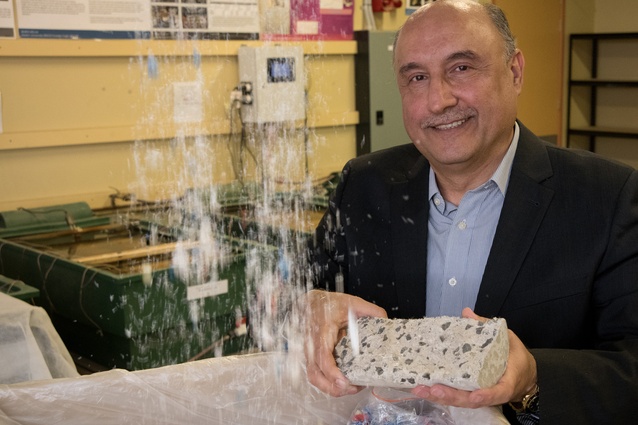The thousands of tonnes of plastic waste created each year in Australia through dialysis treatment could breathe new life into the construction industry, according to researchers at Deakin University.
A team at Deakin’s School of Engineering is behind the new project, which aims to transform the single-use plastic used in the dialysis project into long-lasting sustainable concrete that could perform better than standard concrete.
The project is a collaboration between Dr Riyadh Al-Ameri, a senior lecturer in structural engineering, Katherine Barraclough from the Royal Melbourne Hospital and John Agar from Barwon Health’s University Hospital Geelong.
It came about when Dr Barraclough and Professor John Agar approached Deakin University to find a practical solution to their waste issue.
Dr Al-Ameri said his project team was hoping that the project would not only reduce wastage, but that the shredded plastic waste would also help better protect structural concrete from corrosion.
“Concrete can crack and damage the internal bond, which can then lead to water penetration and corrosion of the steel bars, critical for providing the strength and integrity of concrete structures,” he said.
“If we are able to facilitate production of new types of concrete that will offer better protection, give structures longer life and better performance, as well as help recycle plastic waste, that will be a great achievement.”
Each individual dialysis treatment can create between one and three kilograms of plastic waste. With more than 12,000 Australians on dialysis, that adds up to about 5,100 tonnes of plastic waste per year, according to Dr Barraclough.
“Haemodialysis – the most common type of dialysis – involves making a circuit where blood is pumped from a patient’s bloodstream through a machine then back to the patient,” Dr Barraclough said. “This removes toxins and excess water and is life sustaining for patients with kidney failure,” she said.
“For safety reasons, both the tubes that carry the blood and the dialyser – the part of the machine that cleans the blood – are made of plastic designed for single use only. The result is large amounts of plastic waste generated from each dialysis treatment.
This was originally published by Architecture AU.





